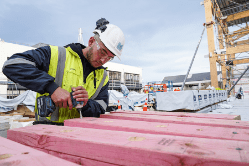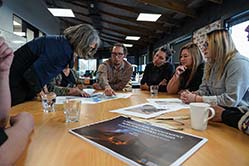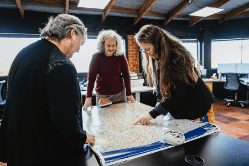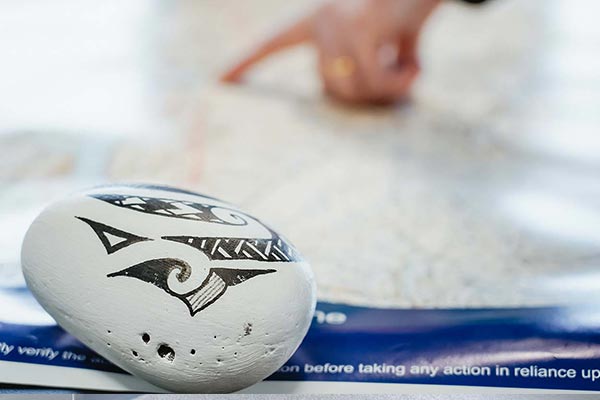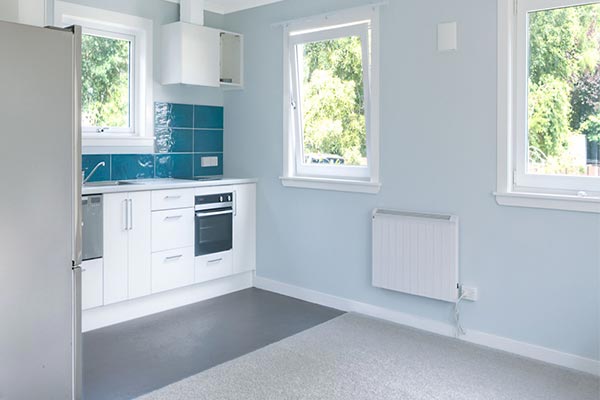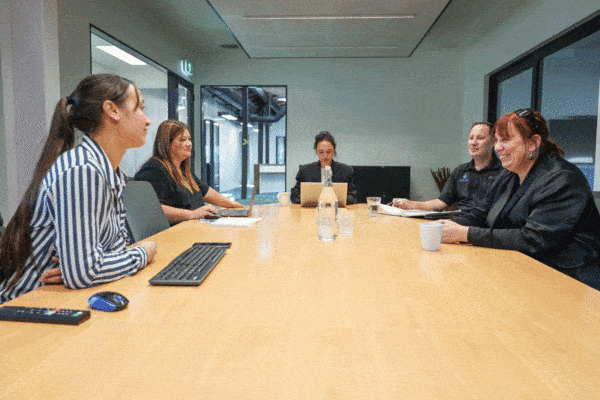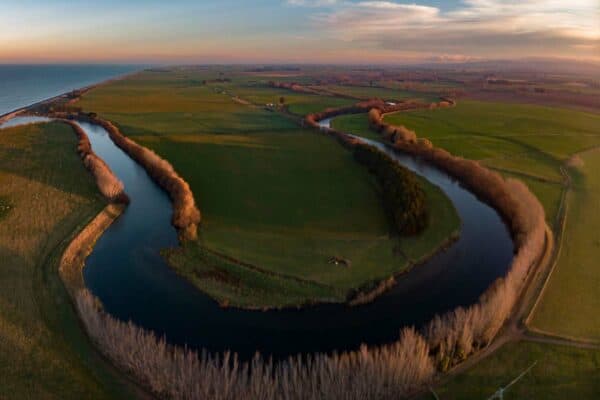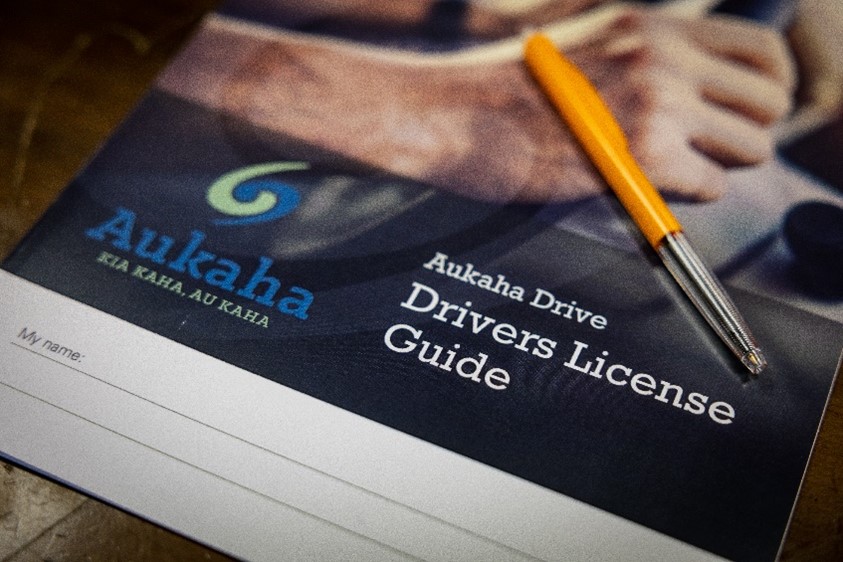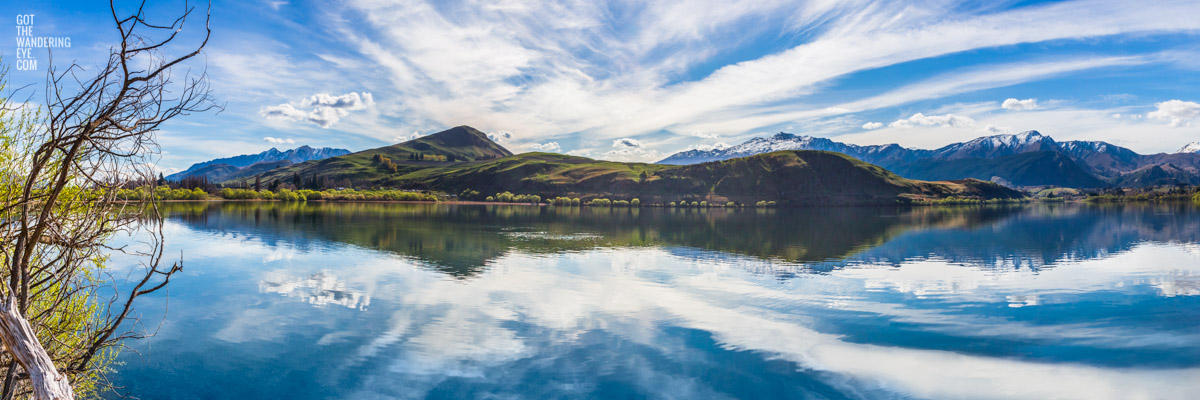A modern office, a historic location
In 2022, Aukaha (1997) Ltd shifted from its former location in upper Stuart St to where it stands today at lower Hanover St.
Led by Simon Kaan (Kāti Irakehu, Kāti Mako), envisioned by Ōtākou artist Ephraim Russell, and guided by the Aukaha Pōari (Board), the new Aukaha workplace at 266 Hanover Street celebrates its authentic/historic anchoring within Ōtepoti, in a modern uplifting space that meets the needs of a diverse team.
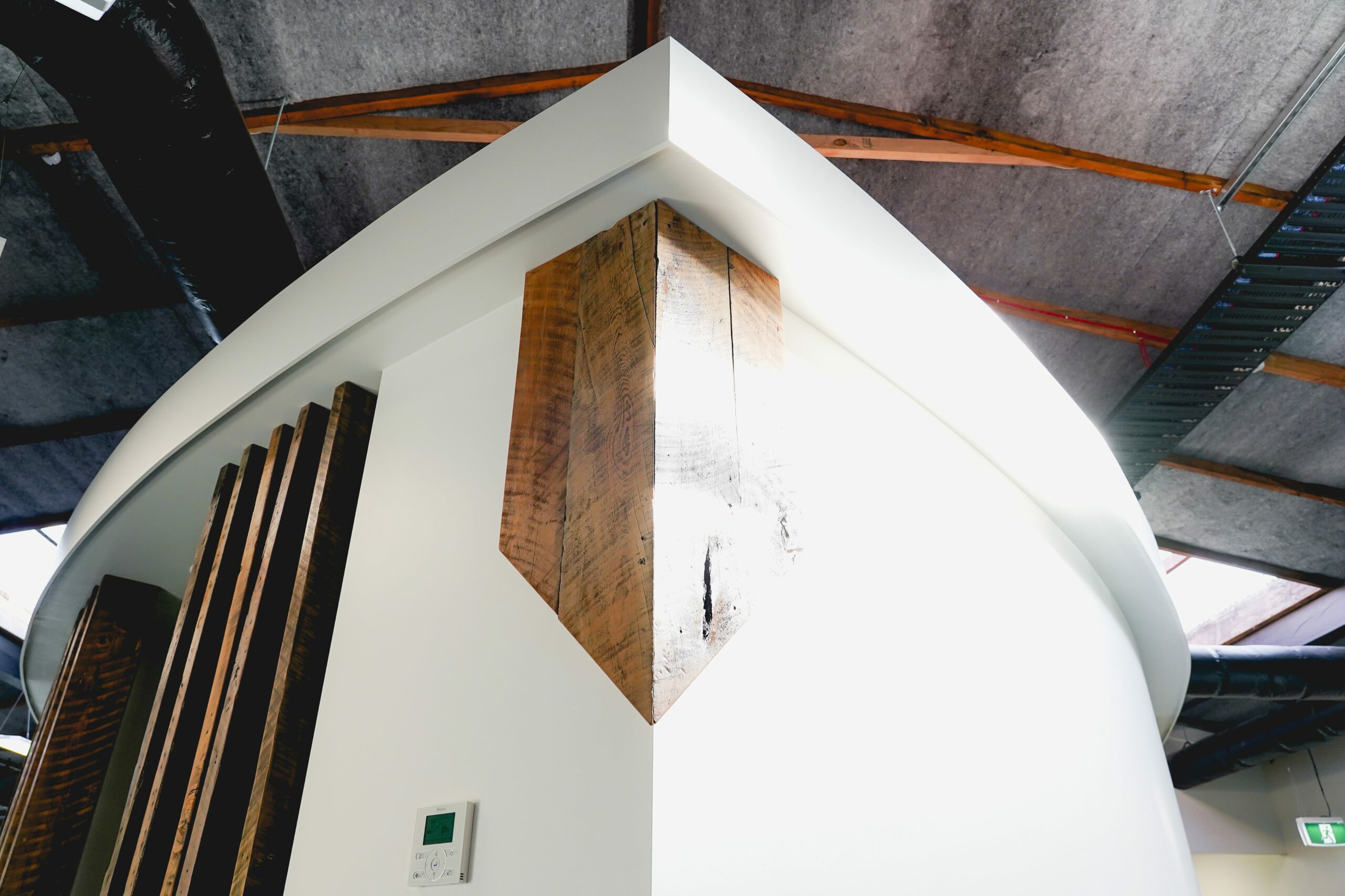
Aukaha - 266 Hanover Street
In 2022, Aukaha (1997) Ltd shifted from its former location in upper Stuart St to where it stands today at lower Hanover St.
The move provided Aukaha’s Mana Ahurea creative design team a blank canvas to implement a mana whenua narrative in its own interior design project.
Led by Simon Kaan (Kāti Irakehu, Kāti Mako), envisioned by Ōtākou artist Ephraim Russell, and guided by the Aukaha Pōari (Board), the new Aukaha workplace at 266 Hanover Street celebrates its authentic/historic anchoring within Ōtepoti, in a modern uplifting space that meets the needs of a diverse team.
Mataukareao
Prior to colonial settlement, the location of Aukaha was named Mataukareao. It was an esturine adjacent to the Otago harbour and forms part of a tauraka waka - a waka landing site for tīpuna Māori. As such, this location holds significance for mana whenua.
The matau is the Māori word used for a fishhook, the kareao is a native vine endemic to Aotearoa New Zealand. Kareao was recorded as growing on the flat below Hanover and Frederick Street. Our tīpuna would use the sharp bend in the kareao as a hook to catch fish with, using muka (flax fibre) to weave in the shimmering pāua shell as a lure. Other uses included hīnaki (eel and crayfish pots), or making toys like bows with arrows. The young tender shoots were eaten and apparently tasted like beans, while watery sap could be blown out of short sections of vine to quench thirst.
The kareao represents strength and endurance and underpins the mahi of Aukaha – to protect our environment and strengthen our communities.
Surrounding the office doors are carved wooden panels made from recycled wood that depict the sharp hooks of the matau. To reflect the usage of pāua in the lures, lit up panels were installed with pink, purple and blue hues. The result is a unique, calming illumination that adds a pop of colour and freshness to our office décor.

Tauraka Waka

As you enter the building, the welcoming space reflects this being a landing place for tīpuna with the central space of the building designed as a waka structure with the tau ihu (prow) of the waka pointing toward the Otago Peninsula. Inside the waka are our board and meeting rooms, and surrounding the waka are the workstations, feeding into the mahi of the waka. This positioning signifies the relaunching of our waka out into our Māori and Pasifika communities to embark on journeys together for the wellbeing of our people and our environment.
The meeting of the tide and whenua is reflected in the colour design of the carpet. Deep blues turn to lighter greens throughout the building to reflect the changing tides. The merge to ochre red reflects the whenua to the west facing side of the building. The colour scheme subtly calls us to picture our feet in the estuarine and feel the tuaki or cockles beneath our feet.
Designs
The glass windows have a glazing manifestation depicting the kaokao or a jagged edge that, in whakairo or carving, can represent the bent elbow form when arms are upheld in the air in a warrior position. Triangle patterns and designs are also used to represent strength and resilience.
Aukaha Chairman Edward Ellison emphasises this as he reflects on the beginning of Aukaha, “First day of business for Aukaha 26 years ago, they were arson [attacked], so to be in a facility like this and display and express our identity, through artwork, identity in a safe respected manner is a huge step forward [for us] from 26 years ago.”
Today, our space thrives on creativity and social cohesion. Many whānau feel safe and are welcome to pull up their own waka and work from the unique office space that draws on our collective past.
“It’s great to be able to manaaki our guests and our Tiriti partners,” says Simon Kaan. “And it helps to whakamana our mahi that we are doing with our Tiriti partners.”
“This is essentially a taurakawaka for people to come and land. It’s a hub, a place to hitch your waka to.”
Preserving and protecting these historical stories buried on this whenua is a significant reminder for Aukaha, as we look to the future and continue delivering services across the takiwā for the Papatipu Rūnaka.
Kia kaha, au kaha - to unite and bind the lashings of a Kāi Tahu waka before setting out on their journey.
